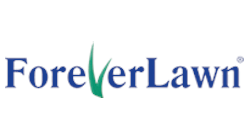By now most larger airports have either installed pet relief areas inside their secure terminal areas, or are in the process of getting these convenient pet pit stops built. The Service Animal Relief Act made it a federal law for all airports with 10,000 passengers or more to offer the pet potty places within their secure areas by August 4, 2016. While synthetic turf is the obvious choice to help pups feel comfortable doing their business indoors, there are many factors that an airport administrator must consider to create a sanitary, durable area.
Drainage
Drainage is the number one consideration when planning your pet relief area. Since the space will be responsible for processing pet urine and other waste, creating a proper drainage solution is key. When looking at drainage, the first consideration is the turf.
There are two questions to ask about the synthetic grass: 1. Does it provide instantaneous drainage throughout the surface, or does the urine have to find its way to the occasional drainage hole? 2. Does the turf require infill to support the blades, such as rubber or sand, or is it a non-infill product?
The first question addresses the efficiency with which liquids are able to move from the surface into the drainage system beneath the turf. Some synthetic turf products drain better than others, including some with knitted backing that allow instant drainage throughout the surface. The quicker the liquid can drain through the turf, the less odor and bacteria will stick around to create unsanitary conditions.
The second question deals with infill that can potentially trap odors and bacteria, and prevent the surface from being effectively cleaned. Infill is never appropriate to use in pet relief areas, and a no-infill product should always be used in any high-traffic pet area where pet elimination is expected.
Keeping It Clean
In pet potty areas, how the area will be cleaned is an important consideration when selecting synthetic grass. As mentioned above, if infill is used, it will be extremely difficult to clean the grass effectively. The infill will become displaced with any high-pressure wash, and it can end up trapping urine and waste, which creates odors and allows bacteria to grow.
Some turf products offer antimicrobial protection to help with microbe growth and odors. When considering turf with antimicrobial protection, it is advised to investigate how the antimicrobial agent has been added to the grass. In some cases, it is an application after the turf has been manufactured, and can wear off over time, requiring re-application. In other products, the antimicrobial agents are manufactured into the blades, and are effective for the life of the product.
Will It Last?
As with any high-traffic area throughout an airport, the surface must be able to withstand heavy, continuous use. Some factors that contribute to the durability of synthetic turf include the system that holds the grass blades in place. The industry standard for artificial grass is for loops of grass blades to be held in place with a urethane coating on the back of the product. In a high-use pet area, the urethane backing can fail, allowing blades to come loose from the product. Selecting a product with a more secure backing, such as a knitted backing, can lead to a longer-lasting, better-performing product.
It is also a good idea to determine what type of warranty is offered on the product itself. In some cases, artificial grass companies offer warranties that are longer than the company has been in business. It is advised to make sure the company has the experience to stand behind the warranty being offered.
Design Considerations
Many of the early pet relief areas have been uninspired, utilitarian spaces designed to provide the most compact area for pet elimination. Most are walled-in rectangular areas that are too small and enclosed to allow for sufficient air flow or enjoyment by the pets or their owners.
The good news is that synthetic turf can be used to create larger, open areas that can function more like an indoor dog park than simply a pet porta-potty. Attractive picket fencing and park benches can be added to create the park feeling, giving pets and their owners more of a relaxing environment to deal with the often stressful situation of getting pets to do their business in a strange environment. Improving on the design of pet relief areas can enhance the travel experience, giving passengers with pets one less reason to feel stressed during their trip.




